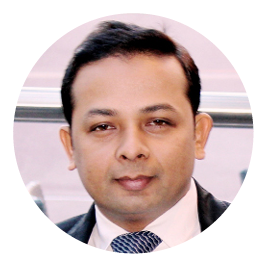Sanjeev K Kanchan
Knowledge Lens , India
- Conference: Regulation
- Presentation: Journey of real-time monitoring in India: from regulation to practice
- Presentation Time: Tuesday 11.30


Sanjeev is the Chief Strategy and Development Officer with Knowledge Lens Pvt. Limited, Delhi, where he looks after development, promotion and advocacy for advance environmental monitoring systems and big data, smart data and artificial intelligence enabled data acquisition, handling, reporting and analysis systems in India and overseas. His job also includes research, advocacy, capacity building of industries and environmental regulators for improved environmental governance. Prior to this, he was associated with Centre for Science and Environment (CSE), New Delhi for over a decade as an environmentalist and researcher.
He has closely worked with various government institutions, industries, leading think tanks, educational & research institutions, professionals and civil societies in India and overseas. His area of expertise includes environmental issues like resource efficiency, pollution monitoring technology, practices and control, life cycle assessment, best technology, policies, regulations and compliance etc.
Sanjeev is also a published author and journalist. He has authored/co-authored some reputed books such as- Heat on Power, Into the Furnace, Excreta Matters- Citizens’ Report on the state of India’s Environment, Best Available Techniques for Indian Iron and Steel Sector, CEMS- A Technical Guidance Manual, CEMS and CEQMS implementation in India: Inspection Manual etc. Sanjeev enjoys writing articles, columns, blogs for various science magazines, research journals and print and online media.
He is a Certified Sustainability Professional and associated with UNEP’s Global Mercury Partnership- coal-combustion (Geneva), Source Testing Association (London), BIS- Management Systems Certification Scheme Committee (New Delhi), Scientific Committee with CEM India, International Centre for Environment Audit and Sustainable Development (iCED), India etc.
Real time pollution monitoring was in practice for quite some time now in major Indian industries like cement, steel, power etc. However, it was limited to the use of opacity monitor for dust monitoring purpose alone, not for reporting to the environmental regulators. It was February 2014, when a direction from central pollution control board of India was issued to the major industries to initiate real time monitoring and reporting of pollution in India industries. The seventeen categories of highly polluting industries were directed to install the Continuous Emission Monitoring Systems (CEMS) and Continuous Effluent Quality Monitoring System (CEQMS). Very soon, CEQMS installation was made mandatory also for potential water polluting industries called grossly polluting industries, located in the Ganga river basin area in put check on river pollution issue. Initial phase of installation saw multiple challenges due to lack of information and knowledge base on the technology, basic infrastructure and regulatory checks. Now after nearly five years from the date of the direction issued, nearly 3000 industries have adopted CEMS and CEQMS. With time, the regulators have developed and revised the guidelines to use, parameters to monitor and data reporting protocol etc. to deal with the initial issues of implementation. Industries have now experienced use of real time monitoring for quite some time now and, with this, a new set of challenges have emerged and which is related to proper operation and data accuracy. The presentation will share the information on current guidelines, data protocol, industrial and regulatory experience, challenges, services and solutions available and expected in the market and the future of compliance monitoring.